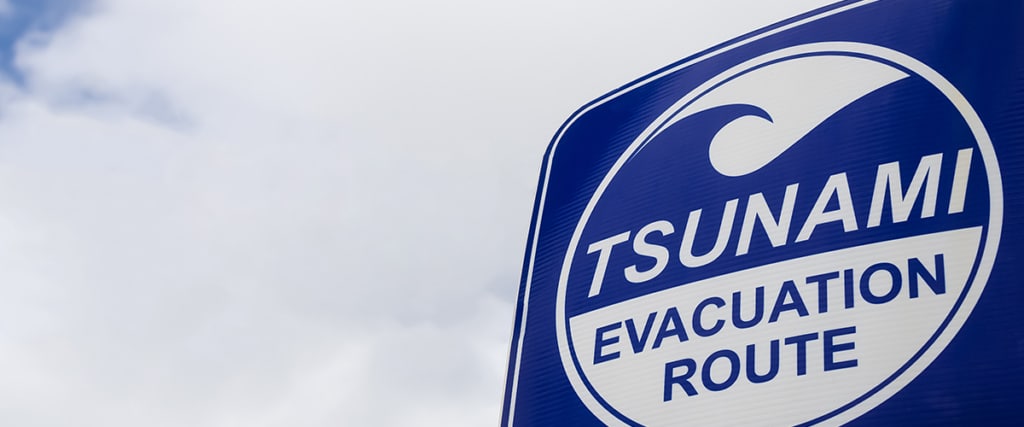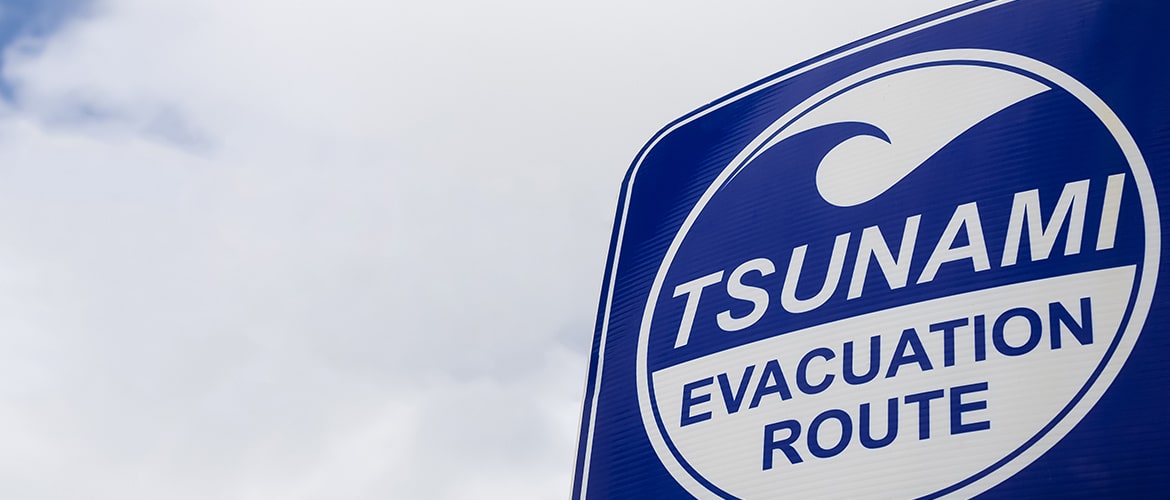DTRIC Insurance Urges Residents to Be Aware and Prepared During Tsunami Awareness Month

HONOLULU (April 1, 2024) – With April being Tsunami Awareness Month in Hawaii, DTRIC Insurance reminds residents – especially those in low-lying areas – to be aware of the dangers of tsunamis and to develop preparedness plans.
While some tsunamis are caused by earthquakes hundreds of miles away, a temblor near the Hawaiian Islands could provide only minutes to respond.
The earliest confirmed tsunami to reach Hawaii took place in 1812. The most destructive tsunami in Hawaii history occurred on April 1, 1946, killing 158 persons and causing extensive property damage. That tsunami originated from the Aleutian islands near Alaska and surprised our state, which was without a tsunami warning system at the time.
“Numerous tsunamis have impacted Hawaii through the decades and we want to ensure that the public is prepared in the event a tsunami watch or warning is issued,” said DTRIC Executive Vice President Dennis Rae. “Preparing for a tsunami or other natural disasters ahead of time will help keep you and your loved ones safe.”
The American Red Cross has these tips on preparing for and dealing with the aftermath of a tsunami:
- View statewide maps here to determine if your home, workplace, and children’s school are in tsunami inundation zones.
(https://dod.hawaii.gov/hiema/public-resources/tsunami-evacuation-zone/) - Plan your evacuation route from work, school, and other frequented locations; emergency planners recommend going inland for at least two miles and getting higher than 100 feet above sea level or 2 miles away.
- Practice your evacuation routes until they become familiar.
- Know the difference between a tsunami warning and a tsunami watch. A tsunami warning means a tsunami could be close to your area. A tsunami watch means a tsunami hasn’t been verified but could be as little as an hour away.
- In the aftermath of a tsunami, continue listening to local news or NOAA Weather radio (www.weather.gov/nwr) for updates and instructions.
- If evacuated, only return when authorities say it is safe. Sometimes a tsunami can go on for a significant time, with waves of various sizes hitting the shoreline in succession.
For home and car insurance claim purposes, Rae recommends doing the following ahead of time:
- You should document your personal items beforehand in the event they become lost or damaged during a tsunami, flood or other natural disaster. A detailed home inventory using photos and video (even by using your smartphone) is helpful should you need to apply for insurance claims and disaster aid. Electronic items such as TVs and computers should have serial numbers that should also be listed on record.
- Having the right documents on hand can also speed up the claims process and substantiate losses for income tax purposes. This includes important papers such as insurance policies; birth and marriage certificates; wills; deeds; financial information such as account numbers, recent tax returns, stocks, bonds and other negotiable certificates; driver’s licenses and other personal identification.
- Store your documents in waterproof sealable bags to take with you in the event of an evacuation. You and/or scan the information on a computer or hard drive/iCloud in the event one set of records become lost or damaged.
About DTRIC Insurance Company, Limited
Established in 1992, DTRIC Insurance Company, Limited offers personal lines of insurance, including auto, homeowners, renters, and umbrella policies. It also provides a wide range of commercial lines of insurance, including general liability, property, and workers’ compensation. DTRIC is a member of MS&AD Insurance Group, Japan’s largest insurance holding company and the eighth-largest property and casualty insurance group in the world. Learn more at www.dtric.com.
Wenli Lin
DTRIC Insurance
(808) 951-1815
Scott Ishikawa
Jocelyn Collado
Becker Communications, Inc. (on behalf of DTRIC Insurance)
(808) 533-4165

